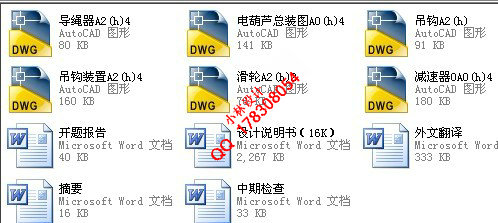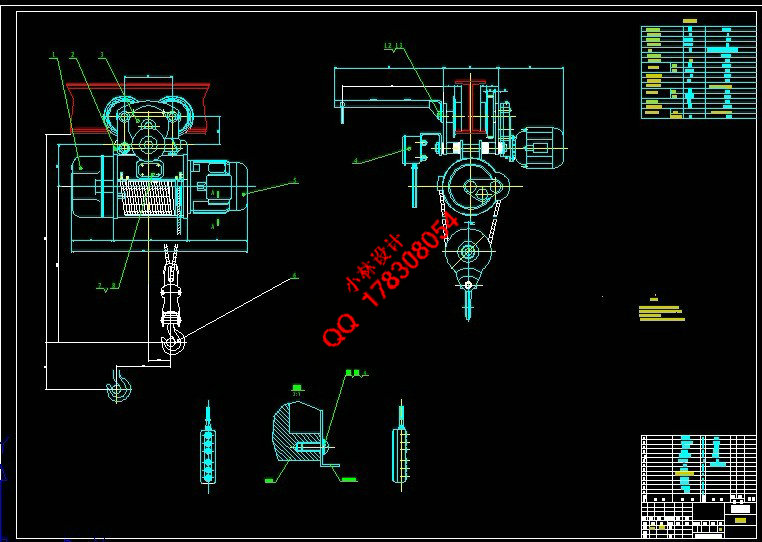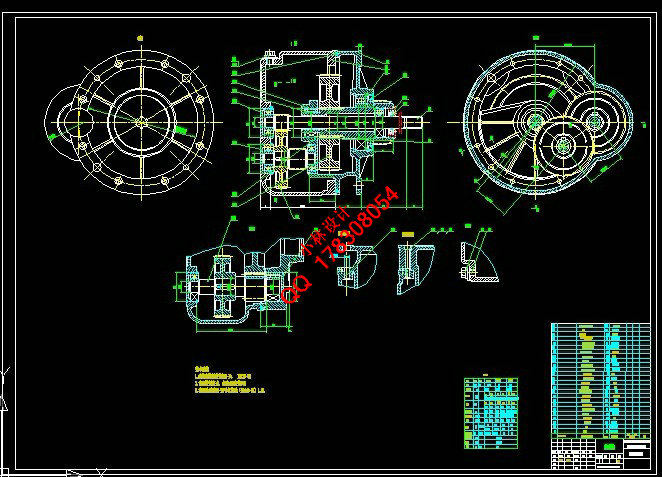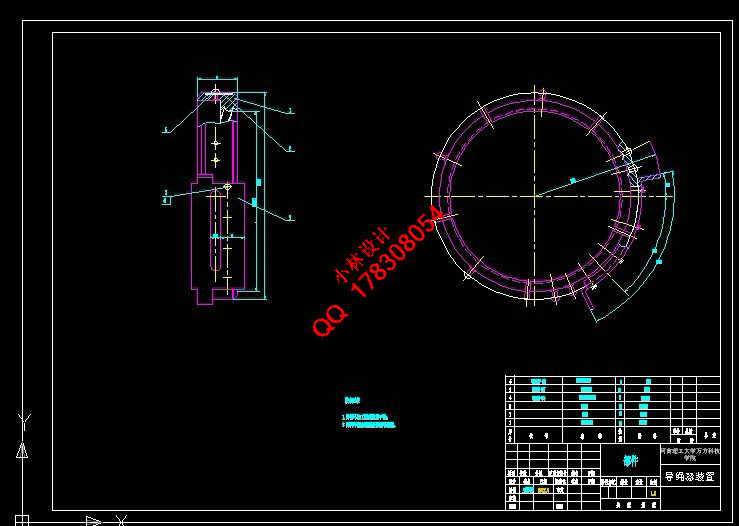 |
 |
|


|
设计名称 |
四速电动葫芦机械系统的设计 |
 |
|
设计编号 |
W345 | |
|
设计软件 |
AutoCAD, Word | |
|
包含内容 |
见右侧图片 | |
|
说明字数 |
15000字 | |
|
图纸数量 |
见右侧图片 | |
|
推荐指数 |
较高 | |
|
价格: |
价格优惠中 | |
|
整理日期 |
2014.2.12 | |
|
整理人 |
小林 | |
|
购买流程 |
<查看如何购买本站设计> |
|
设计简介 |
文档包括: CAD版本图纸,共6张
摘要 。电动葫芦以轻便、构造紧凑、作业范围以点以及线为主、体积小、维修方便、经久耐用等特点而被广泛 应用。现在市场多上以单速、两速电动葫芦为主,而多速电动葫芦比较少。电动葫芦主要有起升部分和运 行部分组成,本次设计起升部分采用同轴式,减速器中的大齿轮和卷筒连在一起,起吊产生的转距经大齿 轮可以直接传给卷筒,使得卷筒只受弯距而不受扭距,减速器采用同轴式三级齿轮传动。电动葫芦主要有 新乡是全国起重行业基地,为此研究开发新型的四速电动葫芦,从而不断改进起重运输机械产品的工作性 能,从而提高运转速度和生产能力,以此来提高自动化水平,制造方便、可靠、新型、高效能的轻小型重 设备满足市场、生产的需要。此项技术,目前在河南属于空白,所以是很有应用前景。所以说,这个题目 在对我们大学生来说还是很有挑战意义的,通过这个设计我们可以更加清晰地了解起重行业的现状,和各
方面的知识,对我们的以后走向社会有很大的帮助.
Abstract become the subject of the production assembly line equipment, part of the line. Electric hoist to lightweight, compact structure, operating range of a point, line-based, light weight, small size, easy maintenance, durability and other characteristics should be shipped widely. Now on the market for a quick, two-speed electric hoist the main, multi-speed electric hoist is relatively small. Electric hoist lifting part and run the parts ,the design lifting part of the coaxial type ,the large gear reducer and reel together, lifting torque generated by the large directly to the reel, making the real only by the bending moment without torque reducer coaxial three-gear transmission. Xin xiang is the lifting base, this must be research and development of four-speed electric hoist, hoisting and conveying machinery constantly improve product performance, increase operating speed and production capacity, improve the level of automation, manufacturing, convenient and reliable, new, high -performance small light heavy equipment to meet the market and production needs. This technology, currently in Henan are blank, very promising. So, this topic still in our very challenging students, though this design we can more clearly understand the status of lifting
industry, and the knowledge, after our very helpful to society. |
|
部分图纸 截图 |
    |
|
说明: |
如需了解本设计的具体详细信息请联系本站客服,说明看哪个设计(编号)哪个详细部分,我们将远程或截图给您观看. 机械毕业设计|论文 |

| [要求PR≥2,百度收录≥1000页;联系QQ:178308054] |
Powered by 小林机械资料商城 © 2013-2020 All Rights Reserved. 客服QQ:178308054
喜欢www.xiaolinbysj.com,请告诉你QQ上的5位好友,多谢您的支持! 皖ICP备2021006205号-1
